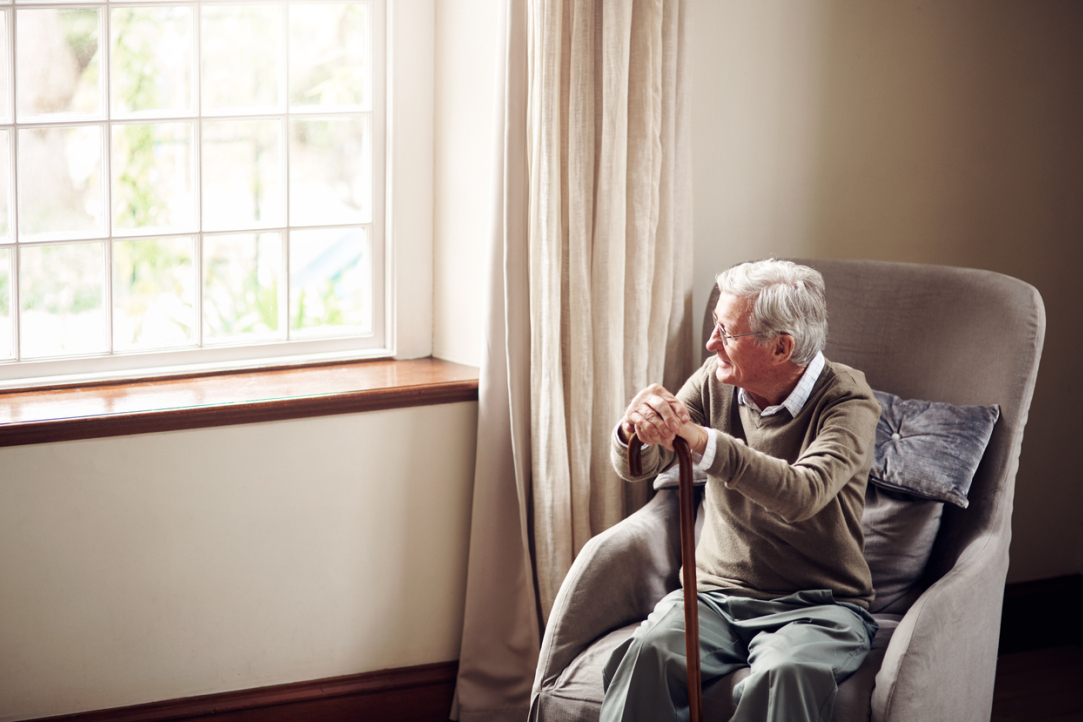Capabilities as an Indicator of Poverty

Using a multidimensional approach, sociologists from HSE University have identified some vulnerable categories of the population that have rarely been the focus of research on poverty. According to their calculations, pensioners and people with disabilities also fall into the ‘poor’ category. The study was published in the Russian Journal of Economics.
Sociologists Elena Nazarbayeva, Alina Pishnyak, and Natalia Khalina from HSE University presented a fresh angle on the measurement of poverty. They studied data from the Selective Monitoring of the Population's Income and Participation in Social Programmes for 2017 (VNDN–2017) using the Multidimensional Poverty Index (MPI).
The Multidimensional Poverty Index is a comprehensive way of measuring poverty. Monetary approaches are based only on the amounts of money a person or a family has, while non-monetary ones take into account other criteria, such as a lack of necessary resources or social isolation. The MPI makes it possible to leverage both monetary and non-monetary indicators.
This approach was established by economist Amartya Sen, who was the first to formulate the idea that poverty is not just a lack of money, but rather a lack of capabilities. According to his theory, social development should lead to an expansion in the range of people's capabilities. If such capabilities are inexistent or insufficient, a person or household can be considered poor.
The researchers calculated the Multidimensional Poverty Index in two stages. First, a set of deprivations that can affect a person or family was identified. They also established criteria that made it possible to determine whether a person actually faces each of these problems. For instance, for a deprivation such as ‘overdue utility bills,’ the following criterion can be used: ‘had overdue utility bills once or more over the past year.’
The most common problem for the Russian population was the inability to replace old or dilapidated furniture. According to VNDN–2017, this situation was typical for 64% of all Russians. Such deprivations as being unable to purchase two pairs of suitable seasonal footwear for each family member (43%) and to spend one week a year on vacation away from home (40%) were less common, but still quite frequent.

There were also relatively rare ones: less than 1% of the respondents mentioned that they lived in a dormitory or communal apartment, and less than 1% stated that they had no opportunity to purchase a television, refrigerator, or phone.
Once the problems were identified, the researchers grouped them into several domains. As a result, they obtained 11 groups that combined deprivations related to health, nutrition, education, satisfaction of basic needs (the possibility to ‘get by,’ the presence of overdue utility bills), purchase of clothing and footwear, availability of basic durable goods (eg washing machines, refrigerators), major purchases (such as a cars or furniture), access to means of communication (having a computer, a phone), and income.
When calculating the index, a weighting factor was introduced for each domain. The higher the weight, the more significant the influence of the domain on the overall index. The weight coefficients were presented as fractions of one, so their combined sum was less than or equal to one in each case. This approach makes it easy to interpret the significance of domains. There are some examples of studies where the coefficients were based on the conclusion of experts or mathematical calculations. When building the MPI with Russian data, the researchers assigned equal weights to all domains. The weight of each domain was evenly distributed across all deprivations included in it.
After that, the total sum of weights of deprivations faced by each person or family in the sample was calculated. The result was compared to a certain poverty line. The threshold was set to keep the share of the poor similar to the relative level of poverty by income—60% of the population's median disposable income. If the sum of deprivation weights was above this threshold, the person or household was considered ‘poor’.
Based on this approach, the researchers concluded that the share of the poor in Russia’s population according to the MPI criteria is 24.8%. At the same time, the application of the absolute monetary poverty criteria used by official Russian statistics uses to the same data led to estimating poverty at 13.0% of the population.
Comparing the index values for different population categories, the researchers showed that it was higher—just like the monetary poverty indicators—among rural residents, children, and families with children (families with multiple children have the highest index values), large households and their individual representatives, unskilled laborers, employees working in the informal sector, and those with a low level of education. At the same time, the MPI includes pensioners and senior citizens, as well as disabled people, in the list of categories with the highest poverty risks.

Alina Pishnyak, co-author of the study, Head of the Centre for Studies of Income and Living Standards
'In Russia, a combination of monetary and non-monetary estimates in poverty analysis can be used, for example, to address social policy issues. It allows us to account for categories of people that were not considered vulnerable before. In this area, the MPI will be instrumental both for assessing poverty and verifying people’s need. This approach is applicable for calculating social benefits for children, as well as payments for pensioners and people with disabilities.'
The project was implemented with the support of the Human Capital Multidisciplinary Research Centre.
See also:
HSE Researchers Study Emerging Adulthood in Russia
Sociology today distinguishes more developmental stages of growing up than just childhood, adolescence, and early adulthood, as commemorated in Leo Tolstoy’s trilogy Childhood, Boyhood, Youth. For the past two decades, sociologists have been exploring the concept of emerging adulthood, a transitional stage that occurs between adolescence and early adulthood. Researchers at the HSE Institute of Education have discovered that in Russia, one out of every two young respondents, with females more frequently than males, falls within the emerging adult category. The study findings have been published in Emerging Adulthood.
News Finds You: HSE Researchers Study Media Consumption of People Who Avoid News
News avoidance is a global phenomenon that affects millions of people around the world. Despite their conscious refusal to consume media content, many argue that the most important news still finds them. Researchers at the HSE Laboratory for Studies in Economic Sociology have studied how people perceive the ‘news-finds-me’ effect. The results of the study were published in the Bulletin of Moscow University.
Good Deeds Bring Moral Satisfaction to Russians
Researchers from HSE University have analysed why people feel happier when they help others. It turns out that joy is caused by different reasons, depending on who we help — relatives or strangers. In both cases, happiness brings moral satisfaction from doing a good deed, but helping loved ones is also associated with satisfying the need for belonging and acceptance, while helping strangers provides a sense of autonomy. The results of the research were published in the Journal of Social and Personal Relationships.
Alcohol Consumption Patterns Vary Across Social Groups in Russia, According to HSE Research
Although there is a larger percentage of drinkers among high-status professionals and executives compared to low-status workers, the former consume less alcohol. This is one of the findings of a study carried out by researchers of the HSE Faculty of Economic Sciences and published in Voprosy Statistiki.
‘Studying at HSE Was a Chance for Me to Get to Know Some Supportive Seniors, Knowledgeable Professors, and Wonderful Friends’
On August 4, 2023, a pre-defence of the thesis on ‘Refugee-Host Community Conflict over Assimilation, Integration, and State Legitimacy: The Case of Rohingyas in Bangladesh’ by Md. Reza Habib will be held at HSE University. The preliminary defence will take place at a joint meeting of the HSE School of Sociology and the International Laboratory for Social Integration Research. Md. Reza Habib shared his experience of studying and preparing his PhD with the HSE News Service.
Factors Affecting Alcohol Consumption Are Shaped in Childhood
Economists and sociologists who study alcohol consumption patterns often link them to people's living conditions and human capital such as education, work experience, and knowledge. Researchers of the HSE Laboratory for Labour Market Studies and the HSE Laboratory for Studies in Economic Sociology have found that non-cognitive skills developed in childhood and adolescence can have a major effect on the likelihood of alcohol abuse later in life and can diminish the role of education in this respect. The paper has been published in the Journal of Comparative Economics.
People Spend 1/6th of their Lifetime on Enhancing Their Appearance
An international team including HSE researchers has conducted the largest ever cross-cultural study of appearance-enhancing behaviours. They have found that people worldwide spend an average of four hours a day on enhancing their beauty. Caring for one's appearance does not depend on gender, and older people worry as much about looking their best as the young do. The strongest predictor of attractiveness-enhancing behaviours appears to be social media usage. The study findings have been published in Evolution and Human Behaviour.
Alcohol Consumption by Young Russians Drops by Half, Study Says
Sociologist Valeria Kondratenko used data from the Russian Longitudinal Monitoring Survey-HSE (RLMS-HSE) to demonstrate that the percentage of young Russians aged 14 to 22 who consume alcohol decreased by 2.3 times from 62.1% to 26.9% between 2006 and 2019. This paper also explores the correlation between the alcohol consumption habits of children and those of their parents. A paper with the findings of this study has been published in the Bulletin of RLMS–HSE.
Obesity in Men Associated with Individualism, Study Finds
Researchers of the HSE Laboratory for Comparative Social Research (LCSR), jointly with colleagues from research centres in Germany, Australia and China, examined the relationship between national variations in obesity rates and cultural dimensions. The associations they found were tested empirically through analyses conducted across 51 countries worldwide. Individualism appears to be associated with a higher prevalence of obesity, but only in the male population. The study findings have been published in Social Science & Medicine.
Helping Others Improves the Lives and Psychological Well-being of Russians
HSE Researcher Ekaterina Nastina has found that the more often Russians help others (whether loved ones or strangers), the more satisfied they are with their lives. However, if a person is over 50 years of age or if values of social justice are important to him or her, helping family and friends has no significant influence on his or her psychological well-being. On the other hand, pro-social, altruistic behaviour towards strangers is equally beneficial to people of all ages and beliefs. A total of 757 respondents took part in the study. An article containing the results was published in the Sociological Journal.


